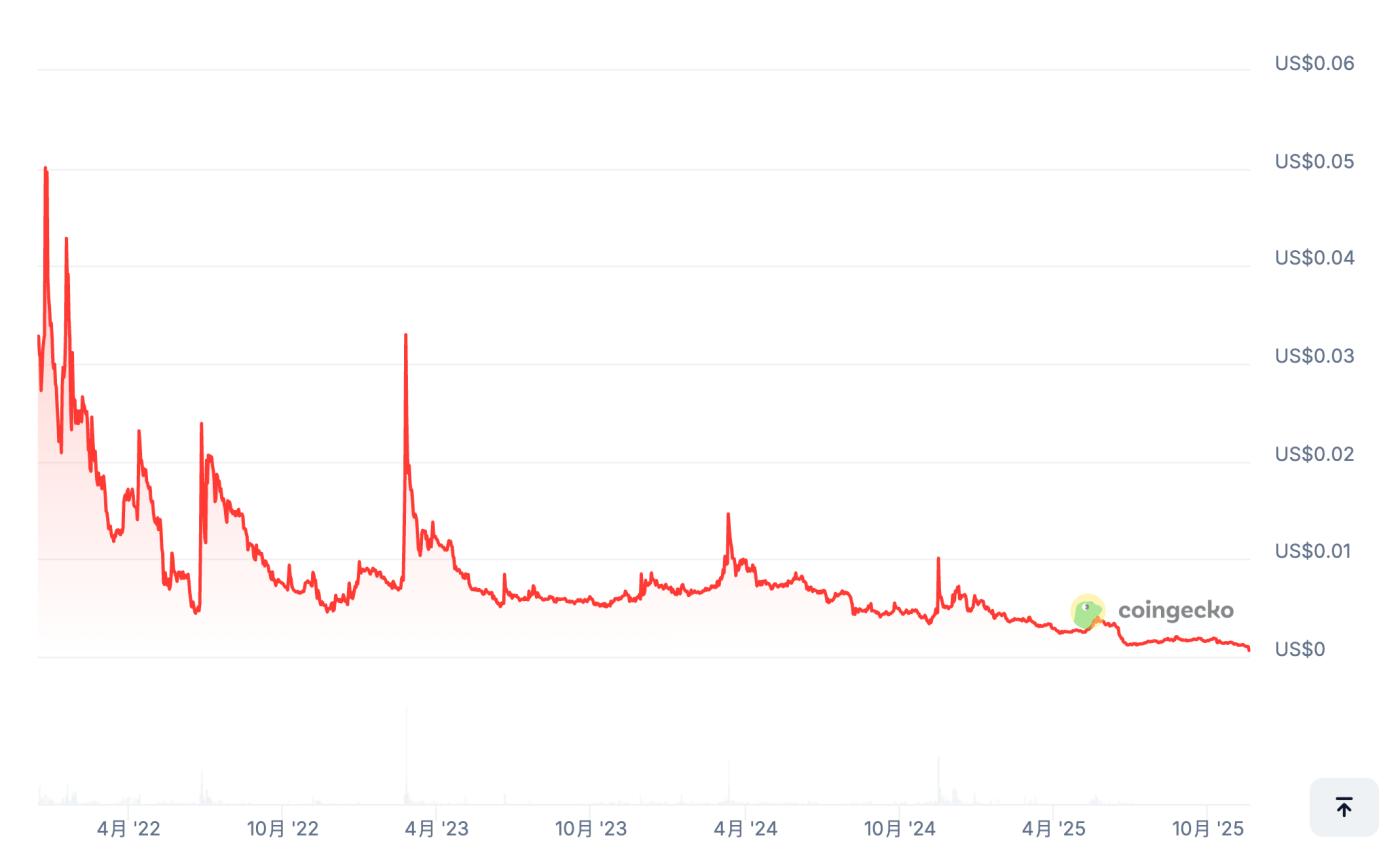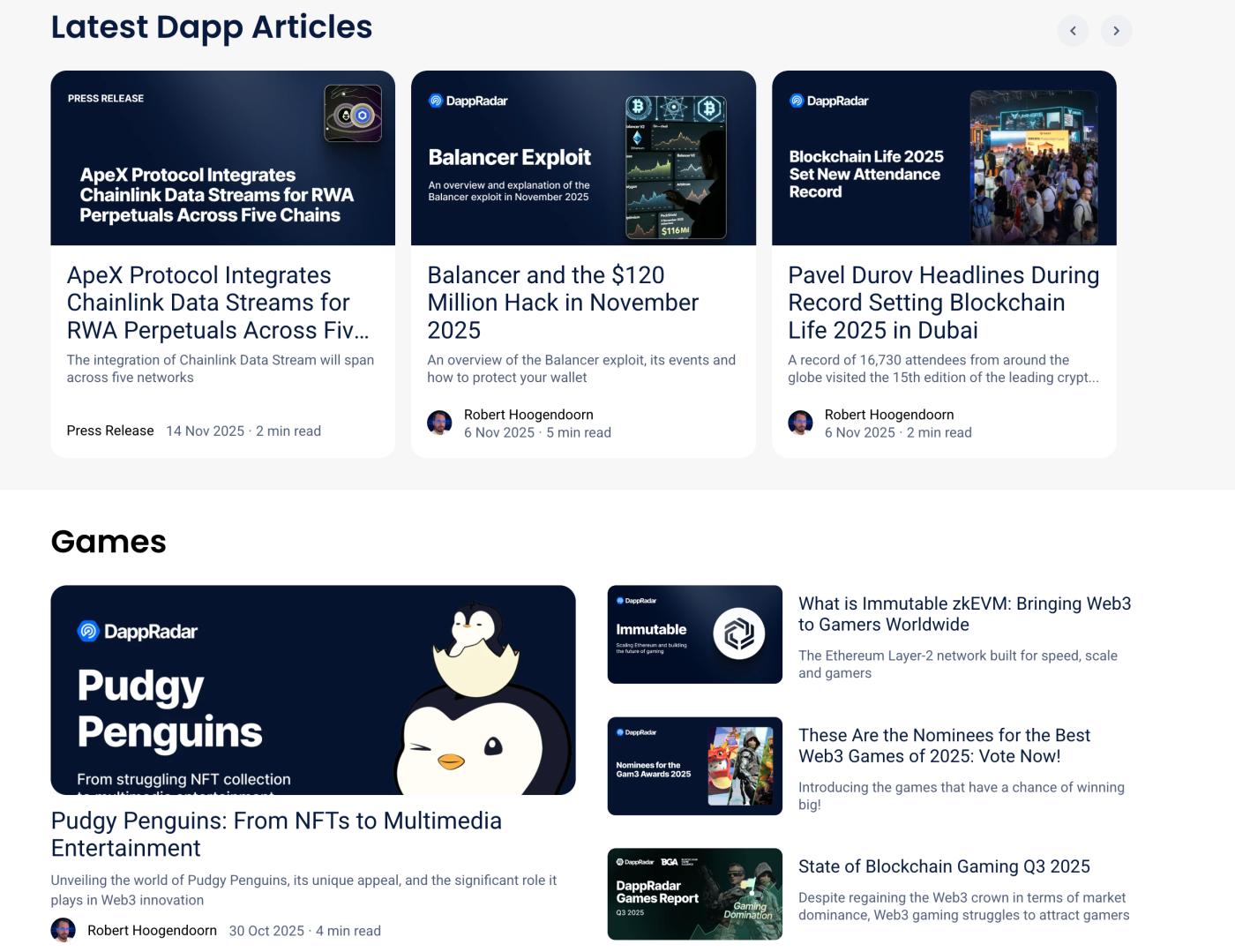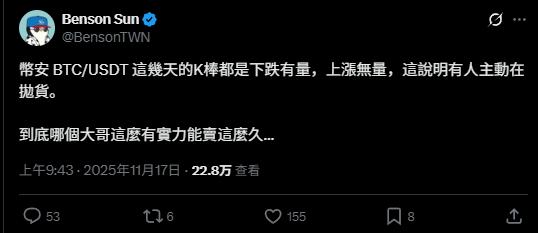
Author: Zen, PANews
Like leaves falling endlessly, the "death" of numerous projects is an inevitable stage in the industry cycle as it enters a downturn, something that practitioners have long been accustomed to. However, the announcement yesterday by the well-known decentralized application data platform DappRadar that it will cease operations still sent shockwaves through the entire industry.
In less than 24 hours, DappRadar's announcement tweet had garnered over 1.6 million views. The phrase "Seven years later, it's time to say goodbye" evoked sadness, nostalgia, and a desire to offer help.
CoinMarketCap CEO @RushCMC asked, "Is there any way to keep you here?" Many others lamented, "In a pure Web3 world, projects like DappRadar should be thriving."
The "seven-year itch" is difficult to overcome; business shut down due to imbalance between income and expenditure.
On November 17, 2025, DappRadar co-founders Skirmantas Januskas and Dunica Dragos announced on the social media platform X that they would be gradually ceasing their data tracking services for all blockchains and DApps over the next few days. They stated that they had tried various options in the past, but ultimately had to make the difficult decision to shut down the business.
The two founders stated that in the seven years since its inception, the DappRadar platform has collaborated with hundreds of blockchains and thousands of projects. However, the platform's current scale and cost structure are no longer compatible with the market environment, and operating a platform of this size is financially unsustainable.
To some extent, the massive data infrastructure built during the high traffic of the bull market has become a money-burning "burden" during the long bear market. Coupled with the lack of revenue channels, this has contributed to its current situation of being unable to make ends meet and becoming unsustainable.
DappRadar has previously raised approximately $7.33 million in two funding rounds, including a $5 million Series A round in May 2021 led by Prosus Ventures and Lightspeed Venture Partners, with participation from Blockchain Ventures and others. During that period of cryptocurrency adoption and rampant speculation, these funds were used to expand data coverage and product functionality.
Regarding the platform token, the DappRadar team adopted a gradual release strategy. Its native token, RADAR, initially had a relatively small circulating supply. Launched in December 2021, approximately 10.6% of the total supply was released by the end of 2023. However, after the beginning of 2024, the price of RADAR tokens generally declined continuously, falling far from its peak of $0.05, a drop of over 97% .

Following the announcement of the shutdown, the price of RADAR plummeted by approximately 30% that day, reaching around $0.0006838 as of 7 PM Beijing time on November 18th. The team has not yet clarified the future arrangements for the RADAR token and DappRadar DAO, only stating that they will solicit opinions through community channels and announce their decision.
Why is DappRadar's business model unsustainable?
The financial unsustainability stems more from DappRadar's business model and revenue streams.
As a data platform, the issuance and operation of the RADAR token is also part of its business model and is tied to user paid subscriptions. In 2021, when DappRadar issued its native token RADAR, it also launched the DappRadar PRO premium membership service. Compared to the basic features of the free version for regular users, PRO members can access exclusive data, customized alerts, advanced filtering, and other exclusive benefits.
Unlike traditional paid subscription models, DappRadar PRO uses a token staking system: users must stake a certain amount of RADAR tokens to activate their membership, with a 30-day unlocking cooldown period. This design, on the one hand, promotes token demand, and on the other hand, incentivizes users to hold tokens long-term through a 15% annualized staking rewards. This approach of linking advanced features with the token economy can theoretically drive token value growth through user holdings and staking.
Targeting B2B clients, DappRadar primarily monetizes through advertising via its data community. Advertising formats include banner ads on its website, sponsored articles, social media promotions, co-hosting online events, email marketing, and sponsoring token airdrops, with varying pricing structures. During the industry's heyday, these revenue streams were substantial and constituted a significant portion of DappRadar's income.
During a period of narrative failure and market downturn, DappRadar also experimented with launching other services to increase platform revenue. In May of this year, DappRadar also launched the DappRadar Premium subscription service for developers, which is charged per Dapp at $249 per project per month.

Purchasing a premium subscription entitles users to greater exposure on project pages, priority review of submitted updates, more detailed monthly traffic and on-chain metric reports, and customized data dashboards. This model essentially charges projects a marketing and data analytics service fee, aiming to generate recurring revenue for the platform.
Clearly, this measure proved ineffective, and six months after the launch of DappRadar Premium, DappRadar reached its end. Essentially, its meager revenue was inextricably linked to the decline of the very sector it chose to focus on.
The Great Decline of GameFi and the NFT Industry
Although DappRadar has been providing data on all categories of dApps, and its homepage navigation covers multiple categories such as DeFi, NFTs, Games, Tokens, and Exchanges, its brand influence and revenue opportunities are highly concentrated in the blockchain gaming and NFT sectors. During the previous bull market, its rankings, market data, and reports were frequently cited by the media, investors, and players.
Especially in the blockchain gaming/GameFi sector, during the period when the P2E model maintained high activity, the DappRadar platform was favored for its comprehensive, accurate, and objective data, becoming a significant driver of its traffic growth. DappRadar has also remained true to its original mission, cultivating deep expertise in the gaming field for a long time, and its original content, such as blog posts and reports, is mostly related to blockchain gaming.

Upon hearing the news of DappRadar's shutdown, Jihoz, co-founder of the well-known blockchain game Axie Infinity and the gaming public chain Ronin, expressed his deep sadness, saying that checking their game's ranking on the Ethereum leaderboard every day had become a daily habit. Even when Jihoz first met his future wife in 2019, he introduced her to her, saying, "Our game is ranked number one on DappRadar, with 200 daily active users."
Another strength of DappRadar is its NFT market data tracking and ranking system, which is also a tool for many NFT players to learn about data when they first enter the field. NFT marketplace Element stated that DappRadar, as one of the most comprehensive NFT data platforms, has been used by them to track industry trends, and said, "DappRadar has always been a veteran in the cryptocurrency field, and it is a pity to see it come to an end."
As the saying goes, "what goes up must come down." With the continued decline in the activity of NFTs and GameFi after 2022, project marketing budgets have shrunk, and user and media attention has decreased. DappRadar's two most commercially promising businesses have long since faded away.
According to DappRadar's latest blockchain game report , the average daily active wallets for blockchain games in the third quarter were 4.66 million, a further decrease of 4.4% compared to the second quarter. In the first quarter of this year, there were 5.8 million, and the number has been slowly declining ever since. Furthermore, in the second quarter of 2025 alone, more than 300 Web3 games ceased updates or shut down, accounting for approximately 8% of the games listed on the platform.
The NFT sector is also facing difficulties. According to CoinGeckodata , the global NFT market capitalization plummeted by $3.5 billion in one month, from approximately $6.6 billion on October 5th, a drop of 45%. Even though sales increased in October, briefly pushing up the floor price of blue-chip NFTs, the market remains deeply sluggish.
As a result, the disappearance of a large number of games and NFT projects and the continuous decrease in active players have led to a shrinking of the active ecosystem that platforms like DappRadar, which provide blockchain game and NFT data, can cover, and the external attention to the platform has also decreased accordingly.
Finally, as DappRadar came to an end, many of the platform's longtime users began to realize—that it had such a difficult journey. This sense of loss and remembrance is both the highest respect for DappRadar and a poignant reminder of the industry's decline and dullness.








